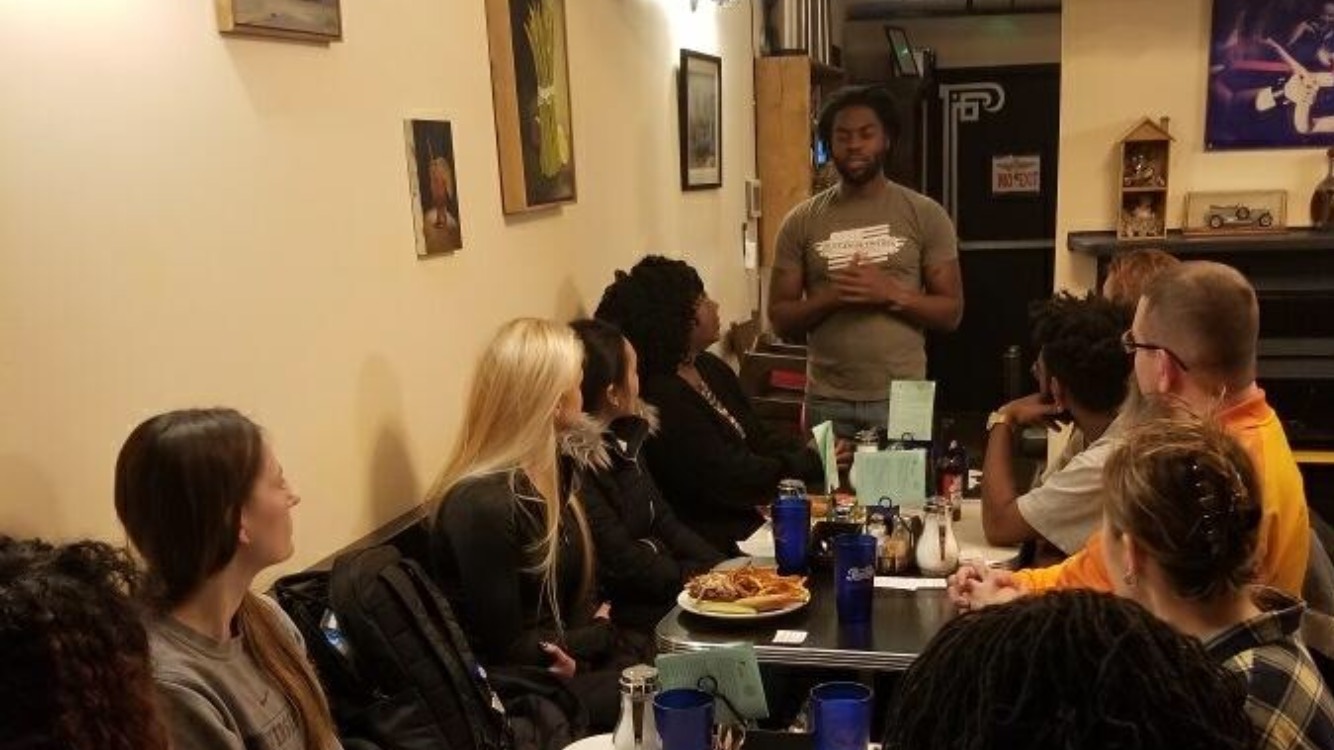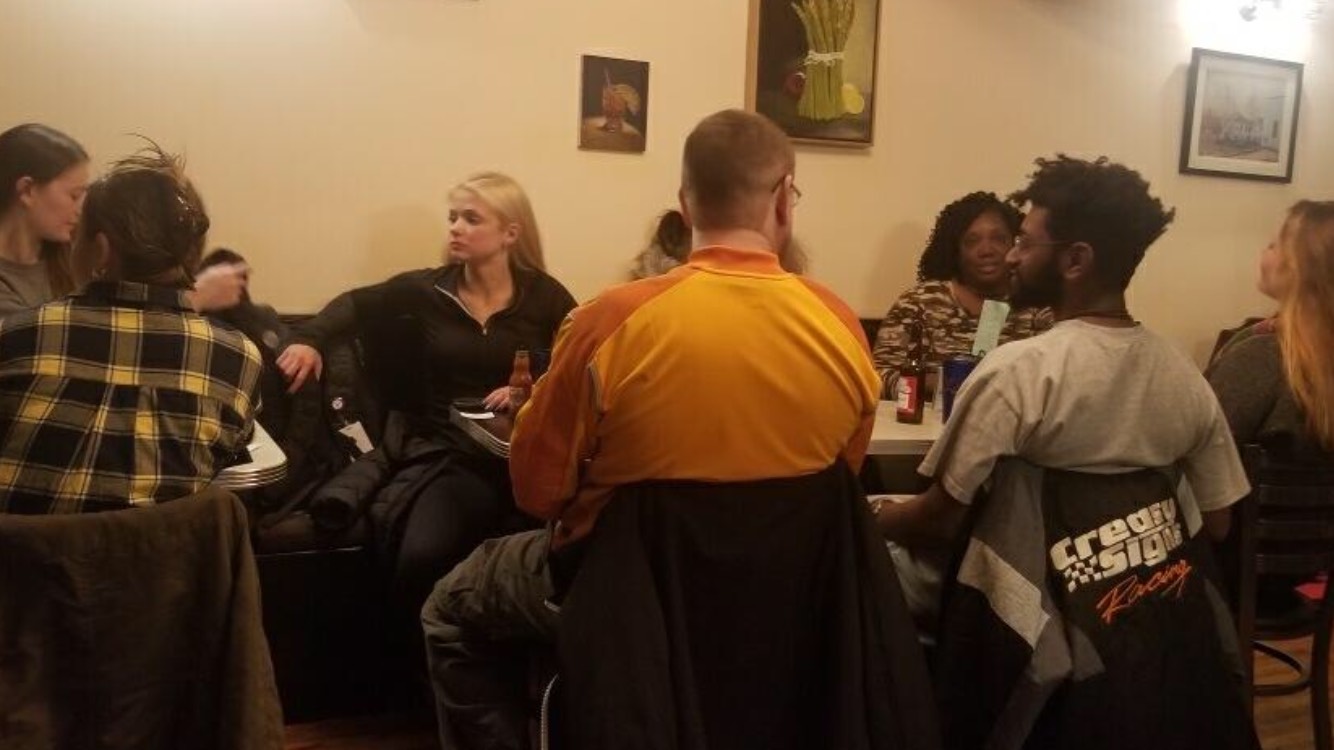Mack’s website, Mack’s Amazon wishlist
I asked Mack to be our first presenter because he’s game for most anything, funny, charming, and super personable (I just described every presenter I got, so I actually no longer know why I picked him first). I met Mack on August 13, 2018, after a summer of organizing to prepare for the anniversary of the events of August 2017. I wanted to be doing something proactive for community, not just reacting to the actions of White Supremacists. Mack got invited to this community meeting that I was attending, and the two of us immediately hit it off. Mack has a can do attitude that isn’t bound by following conventions of what’s been done. He just wants to make positive change. I value his perspective immensely– I remember regularly his words about all children– regardless of privilege– needing time with parents, and yet missing that critically important relationship, in wealthy families with nannies, and less affluent families where parents work 3 jobs to make ends meet. His words reminded me of universal needs, and helped shift my perspective to be more empathetic overall.

One way Mack works is to distribute culturally competent books in area neighborhoods through his Bridging the Gap program. He’s pragmatic– what’s more likely to bring kids out– some piles of books? OR some piles of books in front of a bounce house and some ice cream?! Mack meets the community where they are, accepts and celebrates them as they are.
Some highlights from last night:
- Mack’s description of how mindfulness puts the burden on children to change their behavior without the acknowledgement of context, or change of environment (my summary)
- His story and picture of a proud Afghani girl wearing a hijab that matched the book’s cover picture of a girl in the same pink hijab
- Discussion of a literature/book distribution event on grounds for young community members
- The idea of UVA student-led book drives
- Seeing people engaged with the event for the entirety of the 2 hours, some staying longer than they meant to, and some staying way longer than the 8:00 close.

I hope to see you at the next event Tuesday, January 28 with Lisa Woolfork of Stitch Please
UVA students, register for dates in the series here. Community Members, please join us. I appreciate a message letting me know you’re coming, but spontaneity is okay too!








